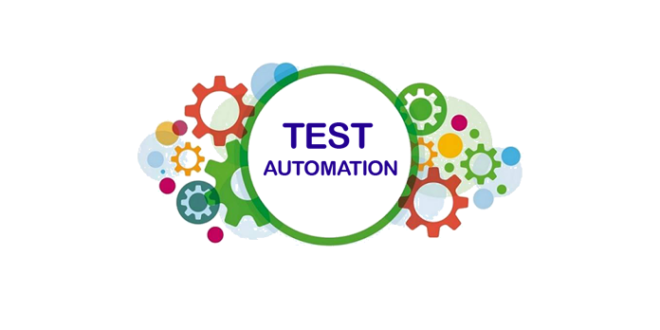Choosing the Right Devices for Effective Automation Testing Solutions
Choosing the Right Devices for Effective Automation Testing Solutions
Blog Article
From Handbook to Automated Screening: A Comprehensive Guide to Transitioning Smoothly and Efficiently
In the realm of software application testing, the shift from manual to automated processes has become an increasingly vital change for companies looking for to improve effectiveness and accuracy in their testing practices. As technology proceeds to breakthrough, the requirement for reliable and smooth automatic testing methods has never ever been a lot more pressing. The journey from guidebook to automated screening is not without its difficulties, but when come close to tactically and with a clear strategy in mind, the benefits can be substantial - automation testing. In this thorough overview, we will discover crucial steps and factors to consider crucial for a successful change, from the initial option of tools to the integration of automation right into existing workflows. Keep tuned to discover the insights that will certainly assist lead the means for a smoother and a lot more effective screening process.
Advantages of Automated Evaluating
Automated testing provides countless advantages, boosting efficiency and accuracy in software program development processes. One key benefit is the considerable decrease in testing time. Automated examinations can be run at the same time on numerous devices and operating systems, considerably quickening the screening phase compared to hand-operated testing. This boosted performance permits faster comments on the high quality of the software program, enabling developers to determine and attend to issues quickly.
Moreover, automated screening ensures a greater degree of accuracy in discovering defects. Since automated tests follow predefined scripts, human mistake is reduced, leading to more reliable test outcomes. Uniformity in testing is additionally improved, as automated examinations execute the same steps exactly each time they are run. This consistency is essential in guaranteeing that all functionalities of the software are extensively examined, minimizing the probability of undiscovered pests sliding with to production.
Choosing the Right Tools

First of all, evaluate your demands and objectives. Recognize the extent of your task, the modern technologies involved, and the ability of your group. This analysis will aid you determine the abilities and functions you require in your testing devices.
Secondly, think about the compatibility of the tools with your existing procedures and systems. Seamless integration with your existing software program growth lifecycle is necessary to ensure a smooth change to automation.
In addition, assess the scalability and flexibility of the devices. As your testing requires progress, the tools should have the ability to adapt and suit adjustments successfully.
Lastly, variable in the assistance and community around the devices. When implementing automated screening, robust assistance and an energetic individual area can offer beneficial sources and assistance. By very carefully taking into consideration these aspects, you can pick the right tools that line up with your needs and set the phase for a successful shift to automated screening.
Composing Reliable Test Scripts

When crafting test manuscripts, it is vital to consider the certain requirements of the software program being evaluated and make certain that the scripts resolve all crucial capabilities. Clear and descriptive naming conventions for examination scripts and test instances can enhance readability and maintainability. Furthermore, including error handling systems within the examination scripts can assist in recognizing and dealing with concerns promptly.
Moreover, organizing examination scripts into modular elements can enhance reusability and scalability, reducing redundancy and improving efficiency in important source examination manuscript upkeep. Normal reviews and updates to check scripts are essential to keep speed with progressing software demands and functionalities. By following these concepts, testers can create robust and effective test scripts that contribute dramatically to the success of automated screening procedures.
Integrating Automation Into Workflows
By flawlessly integrating automated screening tools like Selenium or Appium right into the software application advancement lifecycle, teams can accomplish faster feedback on code modifications, leading to quicker insect discovery and resolution. This integration enables for continuous testing throughout the growth process, making certain that any concerns are identified early on, resulting in higher software application quality. Appropriate assimilation of automation tools needs cooperation between development, screening, and procedures teams to establish a unified workflow that enhances performance and efficiency in supplying top quality software application items.
Ensuring a Smooth Shift
Efficiently transitioning to automated screening involves precise preparation and mindful implementation to make the most of and lessen disturbances performance in the software development process - automation testing. To make sure a smooth shift, it is important to start by conducting an extensive evaluation of the existing screening procedures and recognizing locations where automation can bring one of the most substantial advantages. Involving with all stakeholders early on at the same time, including developers, testers, and project managers, is crucial for garnering support and buy-in for the automation campaign
Interaction is vital throughout this shift phase. Clear communication of the goals, advantages, and assumptions of automated screening assists to handle any type of resistance or issues that may arise. Additionally, giving ample training and sources for staff member to upskill in automation devices and methods is vital for ensuring an effective shift.

Final Thought
Finally, transitioning from guidebook to automated screening supplies numerous benefits, including enhanced effectiveness and dependability. By choosing the proper devices, composing efficient test scripts, and integrating automation effortlessly right into process, organizations can ensure a smooth and effective shift. It is necessary additional reading to accept automation as a useful possession in software application testing processes to improve total top quality and efficiency.
In the realm of software testing, the change from guidebook to automated procedures has become an increasingly essential shift for organizations looking for to improve effectiveness and accuracy her explanation in their screening methods. Automated tests can be run at the same time on multiple tools and running systems, dramatically speeding up the testing stage contrasted to hands-on screening. Uniformity in testing is additionally enhanced, as automated tests implement the same actions precisely each time they are run.To make sure the successful implementation of selected testing tools, the development of reliable examination manuscripts plays a vital duty in confirming the capability and efficiency of automated procedures - automation testing. By following these concepts, testers can create reliable and durable examination manuscripts that add dramatically to the success of automated screening processes
Report this page